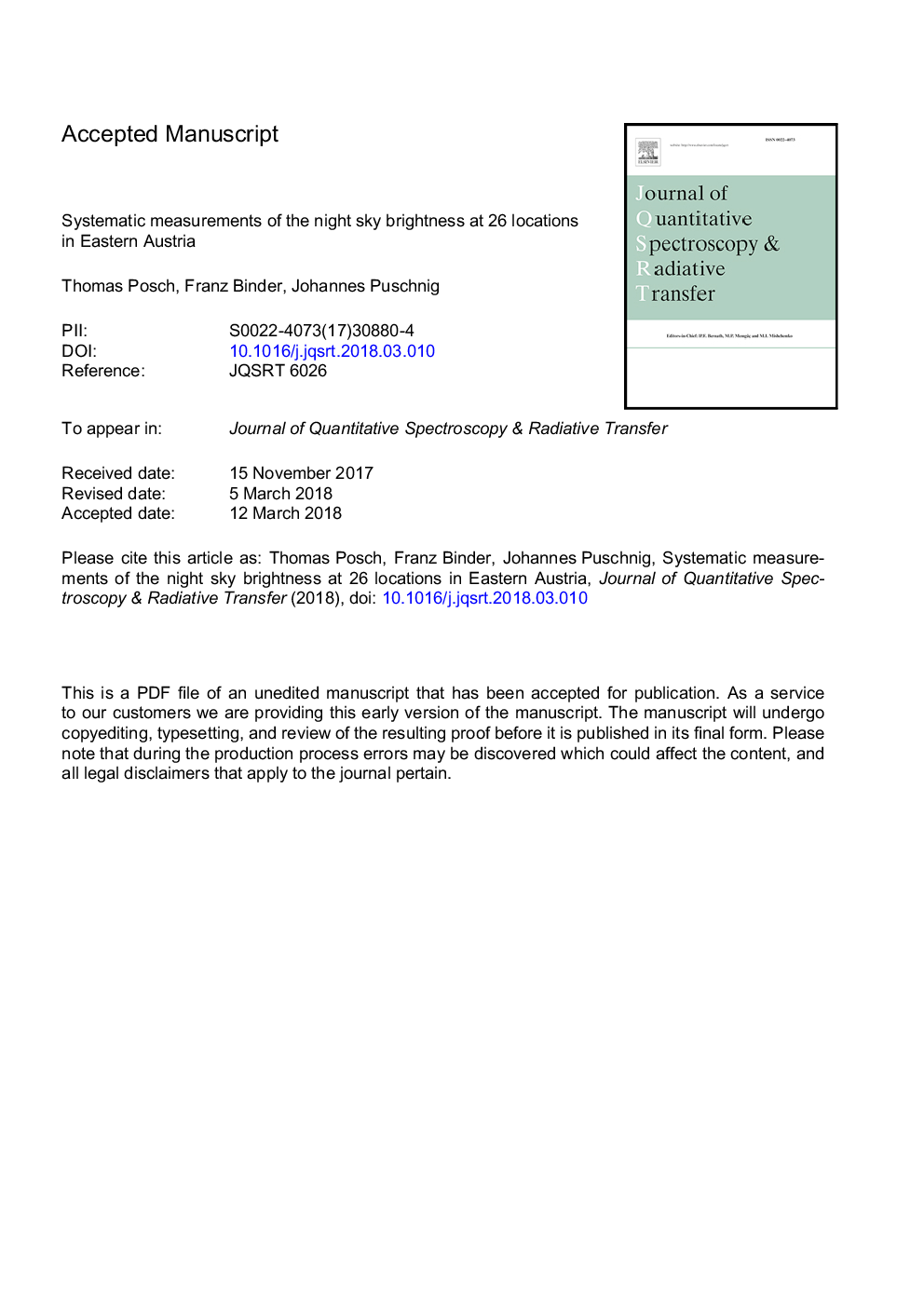| کد مقاله | کد نشریه | سال انتشار | مقاله انگلیسی | نسخه تمام متن |
|---|---|---|---|---|
| 7846030 | 1508604 | 2018 | 50 صفحه PDF | دانلود رایگان |
عنوان انگلیسی مقاله ISI
Systematic measurements of the night sky brightness at 26 locations in Eastern Austria
ترجمه فارسی عنوان
اندازه گیری های سیستماتیک روشنایی آسمان شب در 26 منطقه در شرق اتریش
دانلود مقاله + سفارش ترجمه
دانلود مقاله ISI انگلیسی
رایگان برای ایرانیان
کلمات کلیدی
موضوعات مرتبط
مهندسی و علوم پایه
شیمی
طیف سنجی
چکیده انگلیسی
We present an analysis of the zenithal night sky brightness (henceforth: NSB) measurements at 26 locations in Eastern Austria focussing on the years 2015-2016, both during clear and cloudy to overcast nights. All measurements have been performed with 'Sky Quality Meters' (SQMs). For some of the locations, simultaneous aerosol content measurements are available, such that we were able to find a correlation between light pollution and air pollution at those stations. For all locations, we examined the circalunar periodicity of the NSB, seasonal variations as well as long-term trends in the recorded light pollution. The latter task proved difficult, however, due to varying meteorological conditions, potential detector 'aging' and other effects. For several remote locations, a darkening of the overcast night sky by up to 1 magnitude is recorded - indicating a very low level of light pollution -, while for the majority of the examined locations, a brightening of the night sky by up to a factor of 15 occurs due to clouds. We present suitable ways to plot and analyze huge long-term NSB datasets, such as mean-NSB histograms, circalunar, annual ('hourglass') and cumulative ('jellyfish') plots. We show that five of the examined locations reach sufficiently low levels of light pollution - with NSB values down to 21.8 magSQM/arcsec2 - as to allow the establishment of dark sky reserves, even to the point of reaching the 'gold tier' defined by the International Dark Sky Association. Based on the 'hourglass' plots, we find a strong circalunar periodicity of the NSB in small towns and villages (â¯<⯠5.000 inhabitants), with amplitudes of up to 5 magnitudes. Using the 'jellyfish' plots, on the other hand, we demonstrate that the examined city skies brighten by up to 3 magnitudes under cloudy conditions, which strongly dominate in those cumulative data representations. Nocturnal gradients of the NSB of 0.0-0.14 magSQM/arcsec2/h are found. The long-term development of the night sky brightness was evaluated based on the 2012-17 data for one of our sites, possibly indicating a slight ( 2%) decrease of the mean zenithal NSB at the Vienna University Observatory.
ناشر
Database: Elsevier - ScienceDirect (ساینس دایرکت)
Journal: Journal of Quantitative Spectroscopy and Radiative Transfer - Volume 211, May 2018, Pages 144-165
Journal: Journal of Quantitative Spectroscopy and Radiative Transfer - Volume 211, May 2018, Pages 144-165
نویسندگان
Thomas Posch, Franz Binder, Johannes Puschnig,
